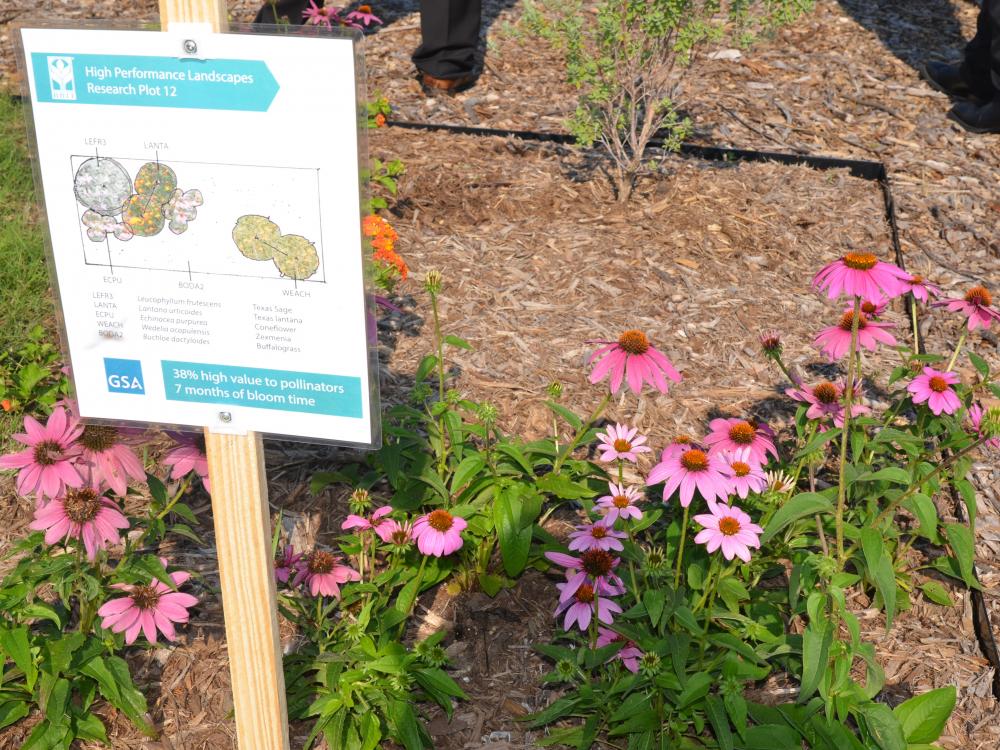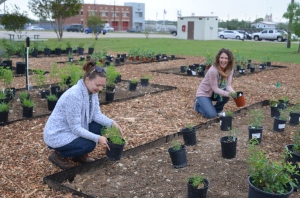
Photos courtesy of GSA.
June 17, 2016
The U.S. General Services Administration is partnering with the Botanical Research Institute of Texas in Fort Worth to ensure more federally owned buildings will feature eco-friendly landscaping that conserves water and supports pollinators while staying cost effective and attractive.
"The project is to create a calculator tool that shows you to how you can improve your landscape and reduce cost and your carbon footprint at the same time,' said Heather Bass, a BRIT researcher working on the project.
GSA is an independent agency of the government whose mission is to deliver the best value in real estate, acquisition and technology services to government and the American people, according to Tina Jaegerman, public affairs officer with GSA.
“GSA is one of the largest public building organizations in the world, and our profile consists of 376.9 million square feet in 7,800 assets across the United States.”
I n addition, GSA has a sustainable branch within the Public Building Services that focuses on becoming more sustainable.
n addition, GSA has a sustainable branch within the Public Building Services that focuses on becoming more sustainable.
“Our efforts are not limited to the buildings we own and manage but also the landscape we design for those properties," said Sylvia Hernandez, GSA Regional Administrator. "The high performance landscape research we are doing with BRIT will help us save money for the American tax payer, while also making decisions that are beneficial to the environment.”
According to Bass, BRIT has already collected extensive research on plants that do well in this region. Over the course of the five-year project, she and other BRIT experts along with a landscape designer and an urban ecologist, will be using that data as well as observing test plots to find out how various landscape decisions can result in water conservation, less maintenance and reduced cost.
They'll scrutinize factors such as the effect of continguous plant material, the proportion of organic matter in the soil and the type of irrigation in place. The data will then be compiled so that planners can evaluate the impact of these factors on water consumption, cost and carbon footprint.
"The calculator will show how you can make things more sustainable compared to conventional landcaping decisions," said Bass.
And while the project was not originally initiated in response to the decline of monarch butterflies and the bee population, the effect of landscaping decisions on bees and other pollinators will be considered.
The information gathered locally will be used for Texas as well as the four states that touch Texas, known as called the Greater Southwest Region. Bass said the study will delve deeper into sustainable landscaping issues than they've ever gone before.
"We're hoping to get something out of this that's really going to make an impact," said Bass.
Sign up for the weekly Green Source DFW Newsletter to stay up to date on everything green in North Texas, the latest news and events. Follow us on Facebook, Twitter and Pinterest.









